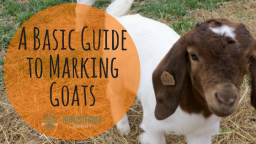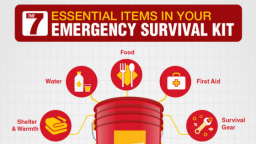The last few years have experienced record-breaking heat throughout the summer, all across North America and Europe. With unseasonably warm winters, it’s likely that this summer will be no different.
Unfortunately, for gardeners and homesteaders, we need to spend quite a bit of time outside, heat or no heat. So what are some ways you can keep cool, while still staying on top of your chores? We’ve got some tips.
1. Timing is Everything
Perhaps most important is to plan very carefully for all your chores to get done in the cooler parts of the day. Get up with the first light to water your plants, feed your animals, and do anything else outside that you might have to do, and take advantage of longer, cooler evenings as well. You’ll have to be organized for this, simple daily to-do lists or chore charts can really help you to plan ahead to beat the heat.
2. Embrace Siestas
To help get your early morning and late afternoon chores done efficiently, embrace the common European and Latin American tradition of the afternoon rest and naptime. Countries like Spain and France are famous for the big, savory meals and long, lazy naps they take in the middle of the day. Hide out indoors after you’ve finished your morning chores (follow some of the tips below to keep your house cool throughout the afternoon), and rest up so you’ll be refreshed for more work in the late afternoon and evening.
3. Hydrate, Hydrate, Hydrate
Possibly the smartest thing you can do to stay cool in the summer heat would be to drink as much water as humanly possible. Keep lots of fresh, filtered water in the fridge, if you can. You can add some great flavor and extra health benefits by infusing it with herbs, lemon juice, or other refreshing fruit blends. Carry water with you while you do your morning and afternoon chores, too, because as the heat creeps up or lingers in the air, you might find yourself sweating quite a bit. When this happens, it’s very important to replace this hydration to keep your body’s natural cooling system in balance.
4. Meal Plan
Huh? What does meal planning have to do with staying cool in the summer? Well, if you’re smart about it, quite a lot! One of the big reasons you might be overheating in your house is by cooking, and cooking during the hotter parts of the day. To help reduce your need for heat in the kitchen, try to plan for colder meals to be served for lunch or dinner, and try to plan for a bulk cooking day where you can prepare several helpings of meat or bake your bread. One hot day in the kitchen can make meals painless–and cooler–for the rest of the week.
Also try to be strategic about what you’re cooking and when. For example, a roast in a crock pot probably won’t make your kitchen too hot, grilling meat for dinner outside will leave the kitchen nice and cool, wheras baking a pie or frying chicken in the middle of the day will most likely leave the whole house too hot for the rest of the day.
5. Cool Off!
While of course cooling off is the point of this whole guide, there are many easy and delightful ways you can cool off throughout the day.
One really fun way is to go swimming! When you’ve finished your morning chores, if you’re able to, take a dunk in a nearby lake or river. You’d be amazed how much this can reduce your overall body temperature, and leave you cool and refreshed for a comfortable afternoon rest.
Or perhaps you can make yourself cooling spray bottles using peppermint or eucalyptus essential oils, which both have a very lovely cooling sensation, as well as the added benefit of being naturally detoxifying.
Of course, there’s always a very nice, cool shower in the middle of the day. Spending enough time in a cold shower to reduce your body temperature is a very simple and easy way to make the rest of your day far more pleasant. Do so frequently thoughout the day to avoid overheating.
6. Open and Close Windows Strategically
In your home, opening your windows might not always keep it cool, sometimes, it might let hot air in. A common way to keep your home nice and cool is to open up the windows first thing in the morning to let the cool air in, and then closing them before it starts to heat up. In some houses, especially those with good insulation, never opening them at all might trap the cold evening air in the house all day. It depends on your climate, as some regions will have lots of cool air in the summer evenings and mornings, while other climates will be stifilingly hot 24 hours a day.
Also consider which side of the house your windows are on. For example, if your house faces east, you might want to open up all your back windows and curtains in the morning, and switch in the middle of the day. Hot afternoon sun and air are most likely going to very negatively impact the temperature of your house.
If you’re not sure how to open and close your windows, spend a few days experimenting! You’re sure to figure out what works if staying cool and comfortable in your home depends on it.
Hope you stay cool this summer!
If you enjoyed this, you might also like….









